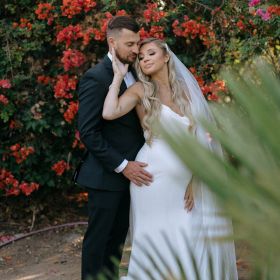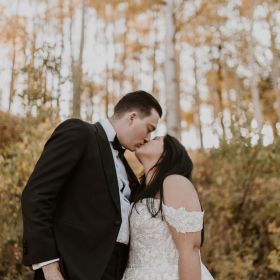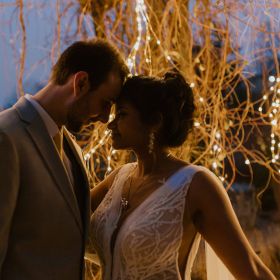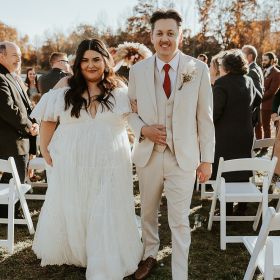Symbols are present in every stage of life. Simply glancing down at someone's hand is usually enough to strike out an otherwise potential love interest within seconds of being introduced. It's not a coincidence that the circle is mentioned in wedding ceremonies to symbolize an endless connection between spouses - no beginning, no end. It's one of the earliest symbols recognized by civilized societies on a global scale. That's right, the western world did not invent the wedding ring tradition. But then where did it originate and how has it evolved?
Rings of Immortality and Permanence
The circle has been a symbol of eternity for multiple ancient cultures. But many researchers believe the idea of wearing the symbol originated with ancient Egyptians and Romans. The process and meanings, of course, differentiated somewhat between the cultures. Egyptians were proud and heavily religious, with lifestyles based on building wealth and prestige on Earth to take it with them to the spiritual realm.
Archaeological findings suggest active exchange of "rings" occurred around 6000 years ago in Egypt. Instead of metals, however, natural materials such as reeds, rushes, sedges, and papyrus were braided into bands for rings and other ceremonial jewelry purposes. The hole in the center of the ring itself signified a gateway leading to the unknown. The act of giving a woman such a trophy signified immortal love. Plant-based materials didn't last long and were often replaced with bone, leather, and ivory. The amount of love and wealth of the presenter was displayed and judged by the quality of the materials used. The wealthiest Egyptians have been found buried with a single strand of silver or gold wire wrapped around the third finger of their left hand - which of course signifies a connection to the heart. In the case of lifelong commitment, men and women both were known to exchange and wear rings.
Romans followed suit but added a "twist" to their earliest proposals. Instead of signifying undying love, their original rings acted to claim the woman and awarded the man a physical symbol of ownership. Later, after civility entered the social arena, Romans gave iron betrothal rings called Anulus Pronubus. As opposed to common hearts and flowers romance, the iron circlets signified strength and permanence. Some contained a key shape on the ring which signified the man's duty and ability to lock the woman away as needed. It is believed that the Romans were the first to engrave these rings.
Rings of Literary and Romantic Significance
Christianity began using rings in wedding ceremonies around 860 AD, but they weren't the common simple bands of today. The earliest Christian bands were highly ornate with engraved lyres, linked hands, or doves. The Christian church stepped in during the 13th century and outlawed the rings as heathenish. But by then, poesy rings had taken root in European countries. Puritans and those who considered poesy rings to be outlandish often cut off the tops of thimbles and wore those to signify marriage.
Religion was a major part of the middle ages, especially between the fifth and 15th centuries. According to the Victoria & Albert Museum in London, that's when poesy rings were the most prevalent. These simple bands of gold acted as wearable literary art forms and were presented as lover's gifts. Each band was inscribed with a phrase, poem, or quote usually based on courtship stories or folk literature of the day.
Regardless of whether you love or curse the tradition of diamond engagement rings, you can thank the Archduke Maximilian of Austria for that little ditty. His engagement to Mary of Burgundy in 1477 included the gift of a ring with flat diamonds that formed the letter "M". Suddenly all socialites and higher standing citizens needed their own glitzy engagement ring. By the 1800s, those in the Victorian age crafted rings out of human hair and used a variety of gemstones to spell out pet names or other endearments.
The act of men wearing modern wedding bands is a relatively new tradition in American history. Since men have been considered the dominant sex for centuries, such an action of dedication seemed unnecessary in early American culture. But that changed during World War II. As men faced horrors across the seas, men began wearing the rings to remind them of what awaited them back home. However, the male civilian act of wearing wedding rings didn't take root until after the Korean War.
Today, wedding rings come in a variety of finishes, designs, and customizations. You can mix them, match them, or recycle family heirlooms. Most men today in America choose to wear rings to honor and prove their commitment to their spouse. After all, times have changed and marriage is all about equal effort, support, and compromise. But whether simple or ornate, a wedding ring is and has always been a symbol of love. The rest is just icing on the cake.




